Обратная связь
| |
| 25 ошибок, которые чаще всего допускают в английском языке бывшие ученики советских школ и институтов |
25 ошибок, которые чаще всего допускают в английском языке бывшие ученики советских школ и институтов
 В данном материале собраны 25 типичных ошибок русскоговорящих учеников английского языка. Настоятельно рекомендуем ознакомиться и стараться избегать сложных ситуаций при использовании слов из данного списка. Я лично насчитал у себя примерно половину ошибок. В данном материале собраны 25 типичных ошибок русскоговорящих учеников английского языка. Настоятельно рекомендуем ознакомиться и стараться избегать сложных ситуаций при использовании слов из данного списка. Я лично насчитал у себя примерно половину ошибок.
Итак, перечень типичных ошибок учеников советских школ:
- Никогда не употребляйте if («если») с глаголом будущего времени.
- Научитесь понимать разницу между словом some и словом any.
- Не пытайтесь употреблять слово adviсe («совет») во множественном числе.
- Старайтесь не путать полдень и полночь.
- Запомните, как правильно попросить кого-либо позвонить вам с помощью телефона.
- Используйте слово pretty как наречие.
- Постарайтесь научиться вовремя употреблять глаголы do и make.
- Никогда не говорите reason because.
- Старайтесь не употреблять tell вместо say.
- Старайтесь не употреблять say вместо tell.
- Не обозначайте обед словом dinner.
- Научитесь правильно называть счет футбольного матча.
- Старайтесь не путать глаголы to learn и to teach.
- Запомните правильный перевод выражения too bad.
- Остерегайтесь использовать выражение «I feel myself» (в английском языке это может быть понято, как признание в занятиях онанизмом).
- Смело заканчивайте письма словом best и своим именем.
- Не стесняйтесь переспрашивать: come again?
- Не стесняйтесь говорить друзьям get out of here!
- Запомните правильный перевод очень полезного выражения "to have nothing to do with" - я ни имею к этому никакого отношения.
- Старайтесь не употреблять sorry вместо excuse me.
- Старайтесь не употреблять excuse me вместо sorry.
- Относитесь осторожнее к слову free.
- Старайтесь вовремя употреблять артикли a и the.
- Не стесняйтесь использовать идиому well built в адрес человека, которое означает, что он хорошо сложен и никак не относится к строительству.
- Старайтесь не коверкать название журнала Esquire ;)
Источник Esquire |
| Смотреть далее | 14.11.2024 | Отправить ссылку друзьям |
| The Letters Written By The Teens Who Have Problems With Their Parents - Письма, написанные подростками, которые имеют проблемы с родителями |
The Letters Written By The Teens Who Have Problems With Their Parents - Письма, написанные подростками, которые имеют проблемы с родителями- Emily, 15
My parents are too harden me. 'We have great difficulties with understanding each other. Every day I hear ''Don't listen to this music', 'Don't talk to this girl - she is spoilt', ''Don't invite your friends' ... Sometimes I feel irritated and we quarrel. I'm really tired of such a don't-do-it way of upbringing. My parents are convinced that everything I do is wrong. To I really deserve such an attitude? - Helen, 16
My parents don't understand me! 'They treat me as if I were a kid though I am already 16! I want to go clubbing and bowling, I want to meet my friends and go to different parties. 'But they tell me to think more about school and my studies. 'When I go somewhere I have to be at home not later than 10 p.m. It's ridiculous and all my friends laugh at me. My father almost had a stroke when he learnt that I had a boyfriend. How can I make them understand that I'm not a child any more? - Michael, 15
My classmates bully me. I don't know why. Maybe because I'm shy and a bit fat or wear spectacles. I told my parents about my problem but they said it was quite all right and that I had to patch things up myself. They seem to be absolutely indifferent to what's going on in my life. They don't care about what I feel or what I want. I'd like to become a computer programmer, but dad says I must become a lawyer. But what about my dreams? I'm torn between wanting to take a stand, and not wanting to upset my parents.

The Letters Written By The Teens Who Have Problems With Their Parents
|
| Смотреть далее | 09.11.2024 | Отправить ссылку друзьям |
| Топик My Travel on Autumn Holidays - Мое путешествие на осенние каникулы |
My Travel on Autumn HolidaysMillions of people in the world spend their holidays travelling. Luckily, there are many companies today, which can organize your tour and leisure time whenever or wherever you like. As for me, I am curious to know more about new places and countries, to explore their sights and to learn about other people’s culture. Most of all, I’m interested in English-speaking countries. Last year, my parents decided to arrange a tour to Great Britain for me. It was supposed to include two teachers and ten children. I can’t tell you how happy I was. It was during autumn holidays and I was planning to stay for a week. The only problem was weather. At this time of the year Britain is rainy and humid. Although, compared to the great time I was going to have there, it was nothing. So I packed my bags and prepared for the voyage. We arrived to London by plane. At the airport we were greeted by our host families. I was going to stay at my penfriend’s place in a village not far from Bristol. The view there was breathtaking. It was a small settlement with a number of neat houses and several farmyards. There were some stores and a pub. When we wanted to experience city rush, we drove to Bristol. I liked this city. It was full of light, spacious stores, various restaurants, malls with cinema theatres, cute bridges and castles. There was even an adventure park for kids in Bristol surroundings, which we visited on the third day of our stay. We spent a day in London. I should say I fell in love with this city once I saw it. Our friends showed us around. We managed to visit the Museum of Madame Tussauds, the Trafalgar Square, the Westminster Abbey. In the evening we went to the Piccadilly Circus, which seemed even more beautiful than on pictures. It’s a pity we didn’t stay there longer, because there is much more to see in London. When I returned home, I was full of positive emotions. If I get a chance I will visit this country again.
[ перевод ]
Мое путешествие на осенние каникулыМиллионы людей в мире проводят свой отпуск в путешествиях. К счастью, сегодня есть множество компаний, которые могут организовать ваш тур и досуг, куда угодно и когда угодно. Что касается меня, мне любопытно узнать больше о новых местах и странах, исследовать их достопримечательности и узнать о культуре других людей. Прежде всего, я заинтересован в англоязычных странах. В прошлом году, мои родители решили организовать для меня тур в Великобританию. Предполагалось, что поедут два учителя и десять детей. Невозможно передать, как счастлив я был. Поездка выпала на осенние каникулы, и я планировал пробыть там одну неделю. Единственной проблемой была погода. В это время года в Британии дождливо и сыро. Хотя, по сравнению с тем, как хорошо я там планировал провести время, это было ничто. Итак, я упаковал свои чемоданы и приготовился к путешествию. Мы прибыли в Лондон на самолете. В аэропорту нас приветствовали наши принимающие семьи. Я собирался остановиться в доме своего друга по переписке, в деревне недалеко от Бристоля. Вид там был потрясающий. Это было небольшое поселение с рядом аккуратных домиков и несколькими фермерскими хозяйствами. Там также было несколько магазинчиков и один паб. Когда нам не хватало городской суеты, мы ездили в Бристоль. Мне нравился этот город. Он был полон светлых и просторных магазинов, различных ресторанов, торговых центров с кинотеатрами, милых мостов и замков. В окрестностях Бристоля был даже парк приключений для детей, который мы посетили на третий день нашего пребывания. Один день мы провели в Лондоне. Должен сказать, что я влюбился в этот город с первого взгляда. Наши друзья водили нас по примечательным местам. Нам удалось побывать в Музее мадам Тюссо, на Трафальгарской площади, в Вестминстерском аббатстве. Вечером мы пошли на Пикадилли, который показался мне еще красивее, чем на фотографиях. Жаль, что мы не остались там дольше, потому что в Лондоне еще много чего нужно осмотреть. Когда я вернулся домой, то был полон положительных эмоций. Если выдастся случай, я посещу эту страну снова.
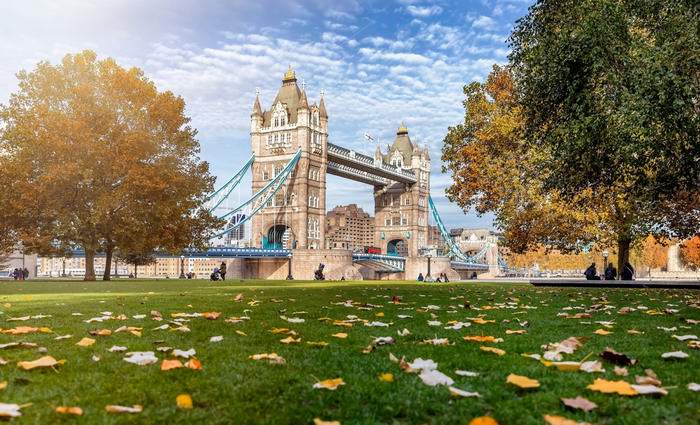
My Travel on Autumn Holidays
|
| Смотреть далее | 08.11.2024 | Отправить ссылку друзьям |
| My Autumn Holidays — Мои осенние каникулы |
My Autumn Holidays - Мои осенние каникулыHurray! We are we having holidays! Autumn holidays are very short - only one week. I`m not going to travel, I won`t go to the seaside, I won`t visit my Granny in the village. However, I like autumn holidays. I will have a lot of time for my favourite activities. In the afternoon I`ll play with my little sister and walk with her outdoors. We will pick up yellow beautiful leaves and watch the smart trees. In the evenings I will read books and improve my Spanish language. It`s so great to have autumn holidays!
[ перевод ]
Ура, у нас каникулы! Осенние каникулы очень короткие - всего одна неделя. Я не буду путешествовать, не поеду на море, не поеду к бабушке в деревню. Но я все-таки люблю осенние каникулы. У меня будет много времени для занятий моими любимыми делами. Днем я буду играть со своей маленькой сестренкой, и гулять с ней на улице. Мы будем собирать желтые красивые листочки, и смотреть на нарядные деревья. А вечерами я буду читать книги, и совершенствовать свой испанский язык. Очень хорошо, что есть осенние каникулы!
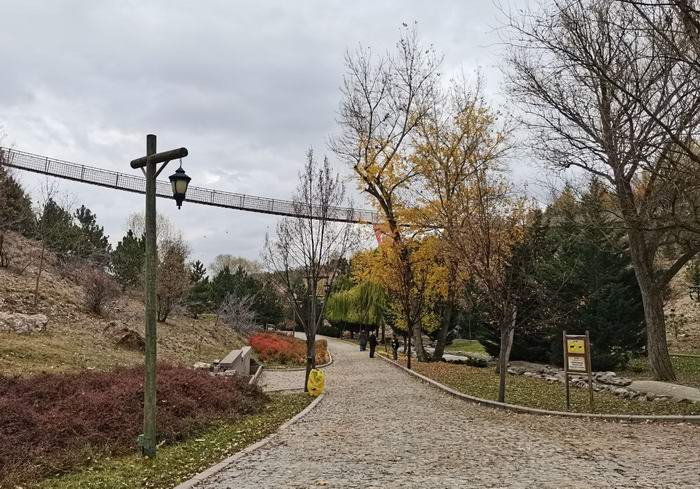
Мои осенние каникулы
|
| Смотреть далее | 07.11.2024 | Отправить ссылку друзьям |
| Where Babies Come From |
Where Babies Come From
A teenage girl comes home from school and asks her mother. "Is it true what Rita just told me? Babies come out of the same place where boys put their penises?"
"Yes, dear," replies her mother, pleased that the subject had finally come up and she wouldn't have to explain it to her daughter.
"But then when I have a baby," the teenager pondered, "won't it knock all my teeth out?"

Where Babies Come From
|
| Смотреть далее | 06.11.2024 | Отправить ссылку друзьям |
| Топик Autumn Holidays — Осенние каникулы |
Autumn Holidays
Seasonal holiday are simply necessary for our body and mind, as well as good sleep. That’s why four times a year we have a rest. Winter holidays last for almost two weeks. Summer holidays are the longest. They last up to three months. Autumn and spring holidays last for only one week. It is still enough time to relax and get ready for the new academic term. Every year during autumn holiday we go somewhere hot. It is rather cold in Saint Petersburg in October and we find it pleasant to transfer temporarily to sunny and warm places. Last year, for example, we spent the autumn holiday week in Turkey at the five-star hotel. The weather was fantastic. People were still swimming in the sea and I joined them. My parents preferred playing outdoor games, such as ping-pong and golf. I managed to get suntanned during this week. The hotel staff was very nice to us. I wish we could stay a little longer. In the evening the entertainers organized concerts and various shows. Once we saw the show with a real crocodile. Another night was dedicated to Greece music and dancing. The local food was delicious. I especially liked the fruit and dessert. Twice we went on excursion to see the sights of Athens and to visit the jewelry stores. Greek people like boasting their produce. You can buy for cheaper prices jewelry, silverware, leather jackets, cotton bedding sets and many other useful goods in this country. People are very open and hospitable to foreign visitors, so it felt safe all the time. When we returned home my friends could hardly recognize me, because I was so tanned. It was a memorable holiday, which I’d like to repeat next autumn.
[ перевод ]
Осенние каникулыСезонные каникулы просто необходимы для тела и ума, также как полноценный сон. Вот почему четыре раза в год мы отдыхаем. Зимние каникулы длятся почти две недели. Летние каникулы самые длинные. Они длятся до трех месяцев. Осенние и весенние каникулы длятся всего одну неделю. Всё же достаточно времени, чтобы расслабиться и подготовиться к новой учебной четверти. Каждый год во время осенних каникул мы уезжаем в жаркие страны. В Санкт-Петербурге октябрь довольно холодный, и нам нравится хотя бы на время перебираться в солнечные и теплые края. В прошлом году, например, мы провели неделю осенних каникул в Греции в пятизвездочном отеле. Погода была потрясающей. Люди все еще плавали в море, и я присоединился к ним. Мои родители предпочитали играть в подвижные игры, такие как пинг-понг и гольф. Мне удалось хорошо загореть в течение этой недели. Персонал отеля был очень добр к нам. Я мечтал, чтобы мы остались там подольше. Вечером аниматоры устраивали концерты и различные шоу. Однажды мы смотрели представление с настоящим крокодилом. Другой вечер был посвящен греческой музыке и танцам. Местная еда была очень вкусной. Мне особенно понравились фрукты и десерт. Дважды мы ездили на экскурсию, чтобы осмотреть достопримечательности Афин и посетить ювелирные магазины. Греческий народ гордится своей продукцией. В этой стране можно недорого приобрести ювелирные изделия, столовое серебро, кожаные куртки, постельное белье из хлопка и много других полезных товаров. Люди очень открыты и гостеприимны по отношению к иностранным посетителям, поэтому я чувствовал себя все время в безопасности. Когда мы вернулись домой, мои друзья с трудом узнали меня, потому что я так загорел. Это были незабываемые каникулы, которые я хотел бы повторить осенью следующего года.
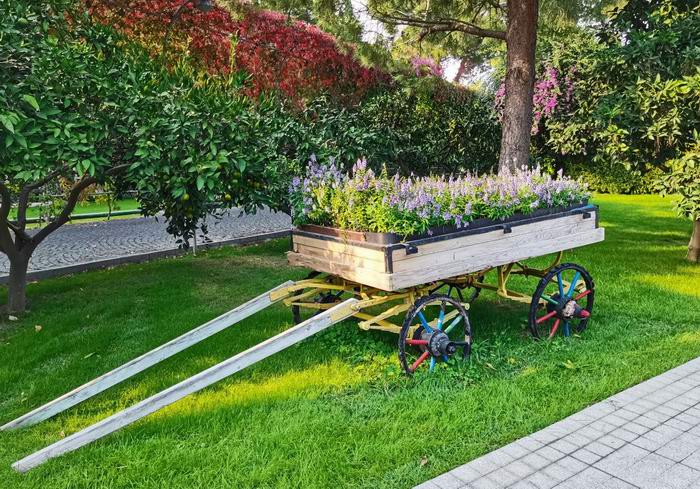
Autumn Holidays
|
| Смотреть далее | 06.11.2024 | Отправить ссылку друзьям |
| The English usually have 4 meals a day - У англичан обычно 4 приема пищи в день |
The English usually have 4 meals a day
The English usually have 4 meals a day: breakfast, lunch, tea (5 o'clock), and dinner. Breakfast can be a full "English breakfast" of corn flakes with milk and sugar, or bacon and eggs, toast and marmalade, tea or coffee. Some people, however, have just a cup of tea or coffee with a toast. This is usually called a "continental breakfast".
At midday everything is stopped for lunch. Most offices and small shops are closed for an hour and the city pavements are full of people on their way to cafes, coffee bars, restaurants. Factory and plant workers usually eat in their canteens.
The English like what they call "good plain food". Usually they like steak, roast beef, Yorkshire pudding, and fish and chips.
Afternoon tea is taken at about 5 o'clock, but it can hardly be called a meal. It is a cup of tea and a cake or biscuits. At the weekends afternoon tea is a special occasion.
Friends and visitors are often invited to have a chat over a cup of tea.
Dinner is the most substantial meal of the whole day. It is usually eaten at 7 o'clock.
The first course may be soup (though the English don't like it very much).
The main course will often be fish or meat, perhaps the traditional roast beef of old England, and a lot of vegetables.
The, next course will be something sweet and often baked, such as a fruit pie. Last of all there may be cheese, often with biscuits.
It is common knowledge that the English are very fond of tea. They like to have "a nice cup of tea" 6 or 8 times a day, sometimes even more.
On Christmas Day a roast turkey is traditionally cooked for dinner. It is usually followed by Christmas pudding.
[ перевод ]
У англичан обычно 4 приема пищи в день
У англичан обычно есть 4 приема пищи в день: завтрак, ланч, чай (в 5 часов) и обед. Завтрак может быть полным «английским завтраком» из кукурузных хлопьев с молоком и сахаром, или яичницы с беконом, тоста с мармеладом, чая или кофе. Некоторые люли, однако, выпивают только чашку чая или кофе с тостом или чем-то подобным. Это обычно называют «континентальным завтраком».
В полдень все останавливается на ланч. Большинство офисов и маленьких магазинов закрываются на час и городские тротуары заполняются людьми, направляющимися в кафе, кофейни, рестораны. Фабричные и заводские рабочие обычно едят в своих столовых.
Англичане любят то, что они называют «хорошей простой пищей». Обычно им нравится стейк, ростбиф, йоркширский пудинг и рыба с жареным картофелем.
Послеобеденный чай обычно принимают около 5 часов, но это едва ли можно назвать едой. Это чашка чая и пирог или печенье. В выходные послеобеденный чай — это особый случай.
Друзья и гости часто приглашаются, чтобы поболтать за чашкой чая.
Обед — самая плотная еда за целый день. Его обычно принимают в 7 часов вечера.
Первым блюдом может быть суп (хотя англичанам он не очень нравится).
Вторым блюдом часто бывает рыба или мясо, возможно традиционный ростбиф старой Англии, и много овощей.
Следующим блюдом будет что-то сладкое и частое испеченное, такое как фруктовый пирог. После всего может быть сыр, часто с печеньем.
Общеизвестно, что англичане очень любят чай. Им нравится выпивать «хорошую чашку чая» 6 или 8 раз в день, иногда даже больше.
На Рождество традиционно готовится на обед жареная индейка. Она обычно сопровождается Рождественским пудингом.
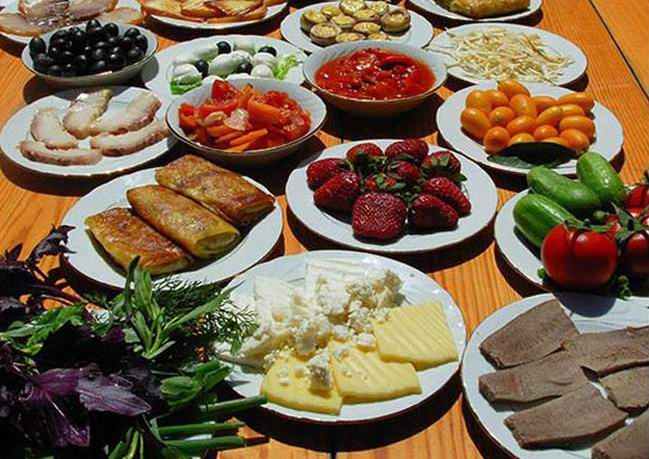
The English usually have 4 meals a day
|
| Смотреть далее | 05.11.2024 | Отправить ссылку друзьям |
| Deathbed |
Jake was on his deathbed while his wife, Becky, maintained a steady vigil by his side. As she held his fragile hand, her warm tears ran silently down her face, splashed onto his, and roused him from his slumber. He looked up and his pale lips began to quiver with sound.
"My darling Becky," he whispered.
"Hush, my love," she said. "Go back to sleep Shhh! Don't talk."
But he was insistent. "Becky," he said in his tired voice. "I have to talk. I have something I must confess to you."
"There's nothing to confess," replied the weeping Becky. "It's all right. Everything's all right, go to sleep now."
"No, no. I must die in peace, Becky. I slept with your sister, your best friend and our next door neighbor."
Becky mustered a pained smile and stroked his hand. "Hush now Jake, don't torment yourself. I know all about it," she said. "Why do you think I poisoned you?"

Deathbed
|
| Смотреть далее | 05.11.2024 | Отправить ссылку друзьям |
| Making a Confession |
A drunken man staggered into a Catholic church, sat down in the Confessional and said nothing.
The priest is waiting and waiting and waiting.
The priest coughs to attract the drunk man's attention, but still the man says nothing.
The priest then knocks on the wall three times in a final attempt to get the man to speak.
Finally the drunk replies, ''No use knockin,' pal. There's no paper."

Making a Confession
|
| Смотреть далее | 29.10.2024 | Отправить ссылку друзьям |
Начало < Предыдущая 15 16 17 18 19 20 21 Следующая >
|
| |
Англо-русский словарь онлайн
Популярные:
Онлайн тест-тренажер английского глагола to be

20 английских идиом, которые должен знать каждый

Бесплатные аудиоуроки серии English USA - Так говорят в Америке - Урок 16

Бесплатные аудиоуроки серии English USA - Так говорят в Америке - Урок 10

Тест на знание неправильных глаголов английского языка

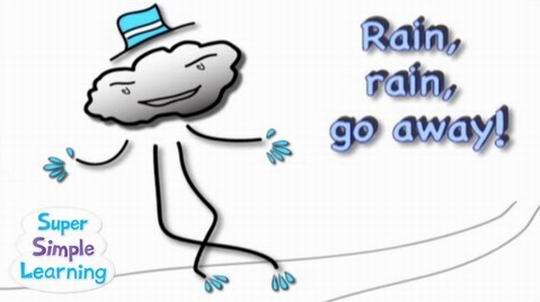
Rain, Rain, Go Away!
How much vocabulary do you know? [Test]
 LearnEnglishBest RSS LearnEnglishBest RSS
|


